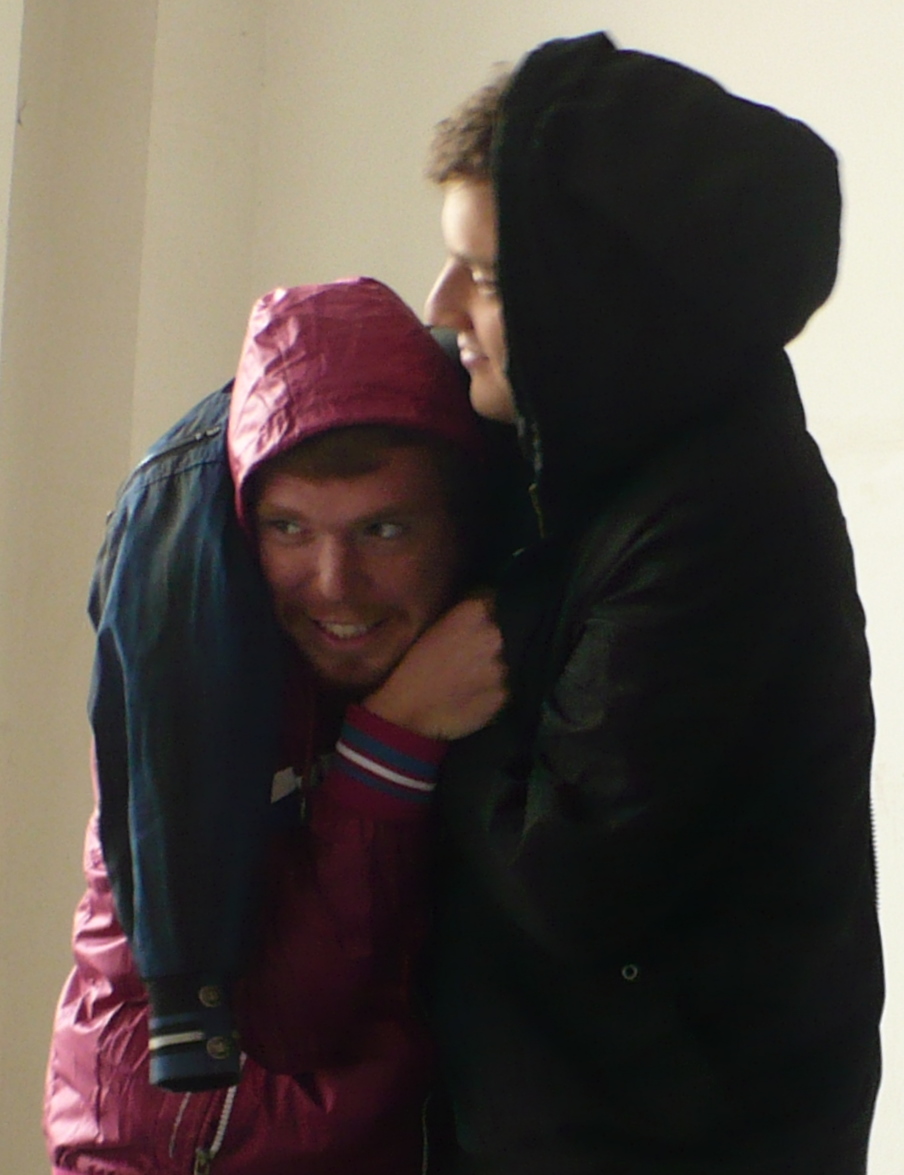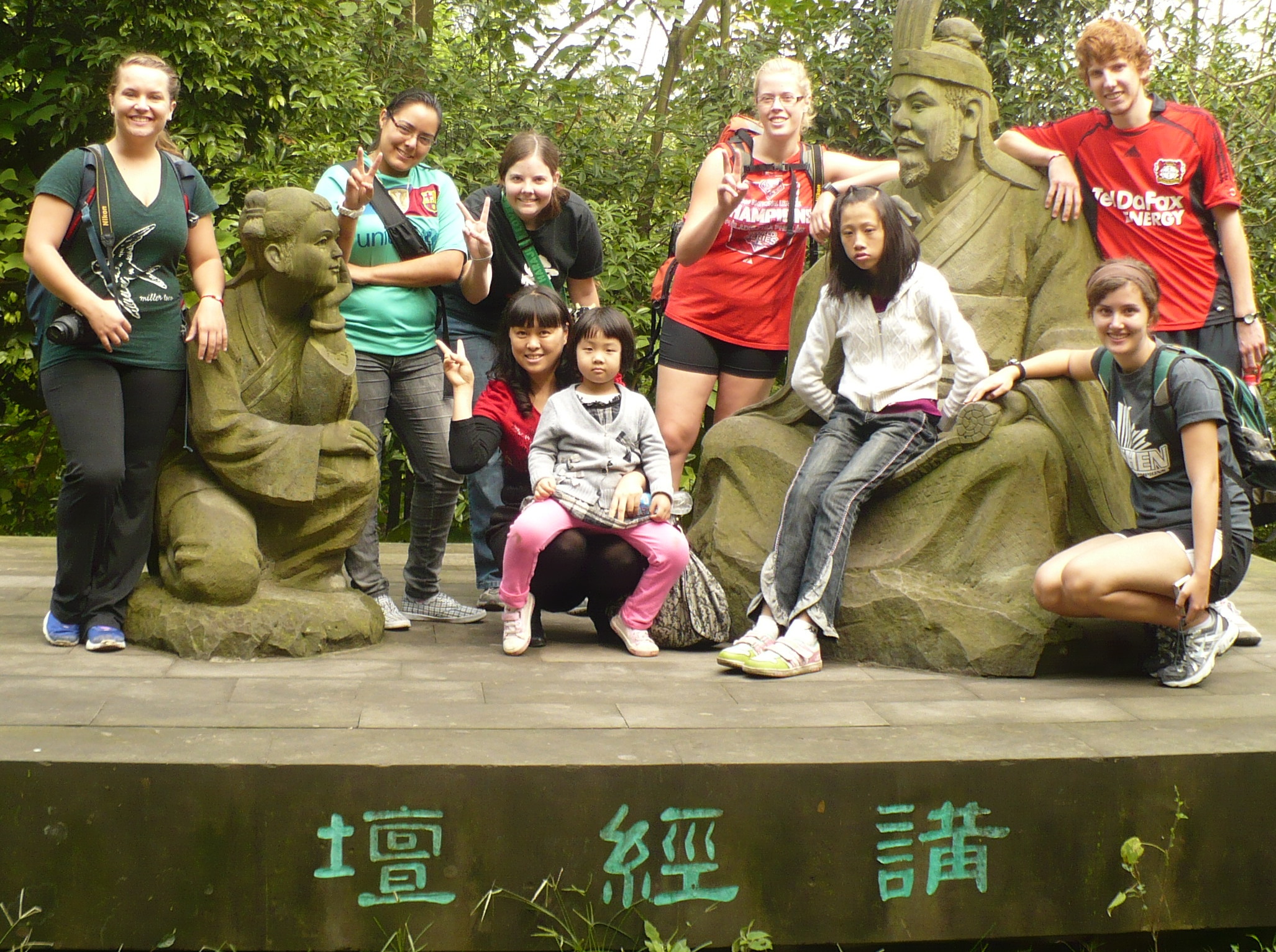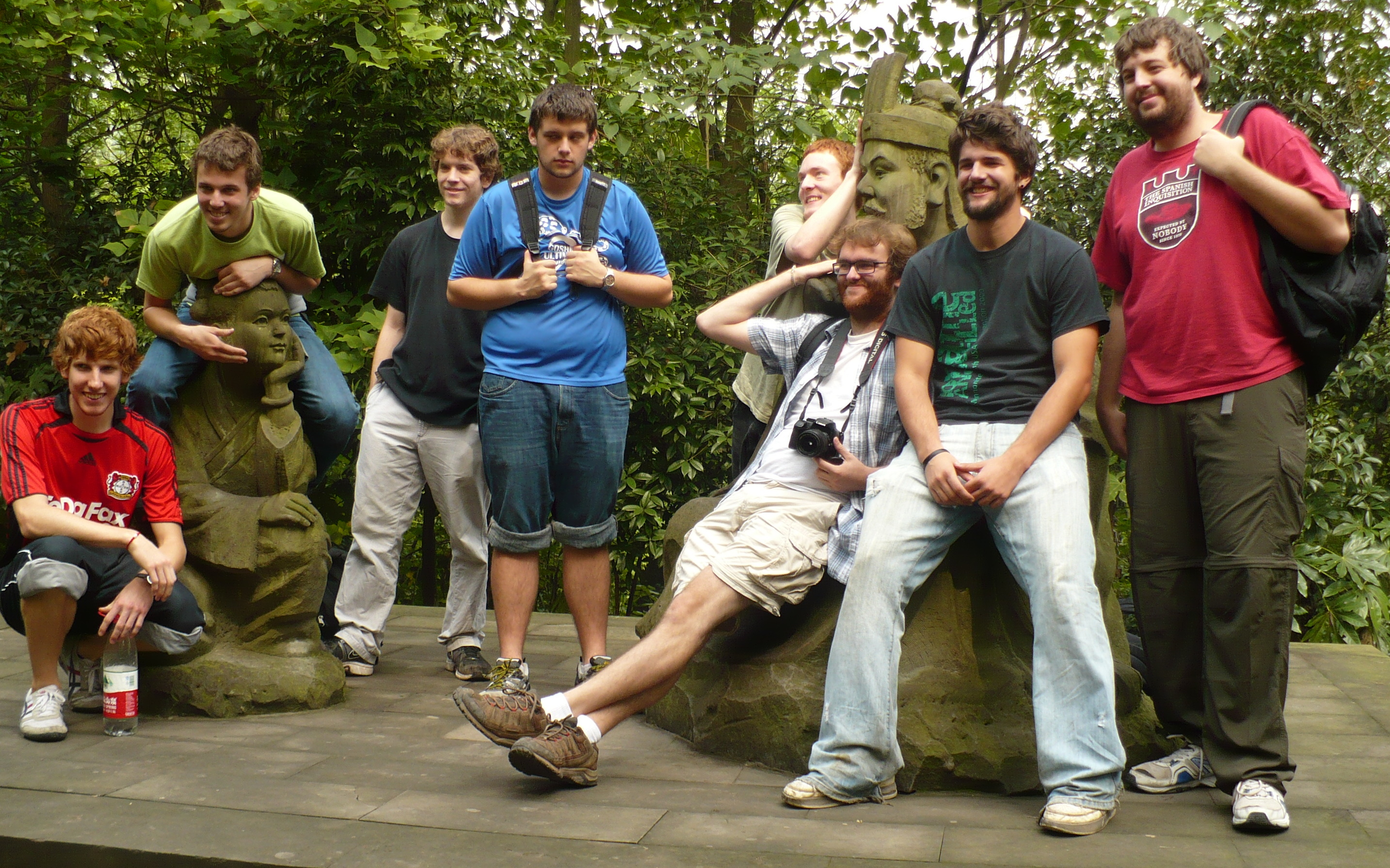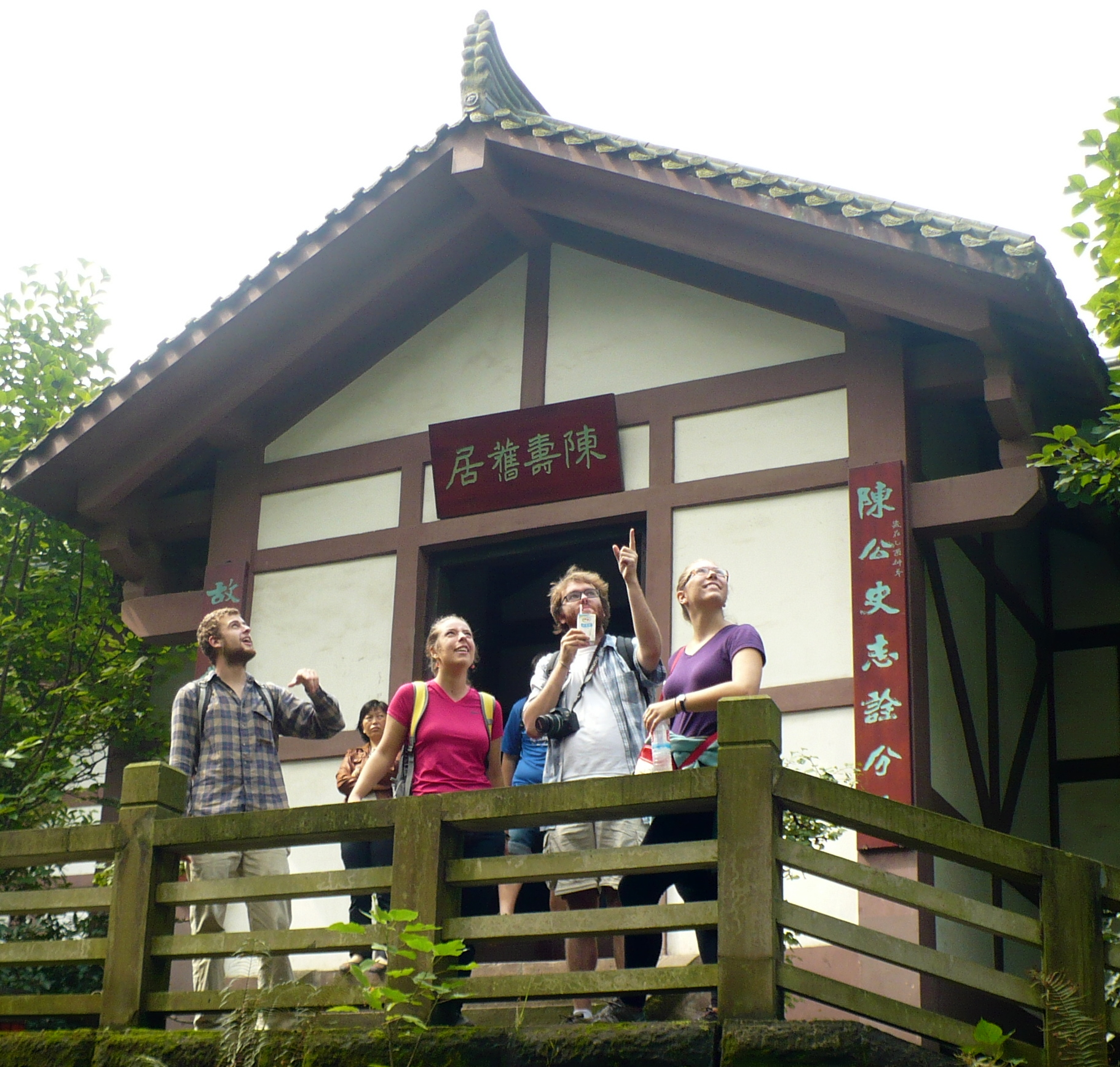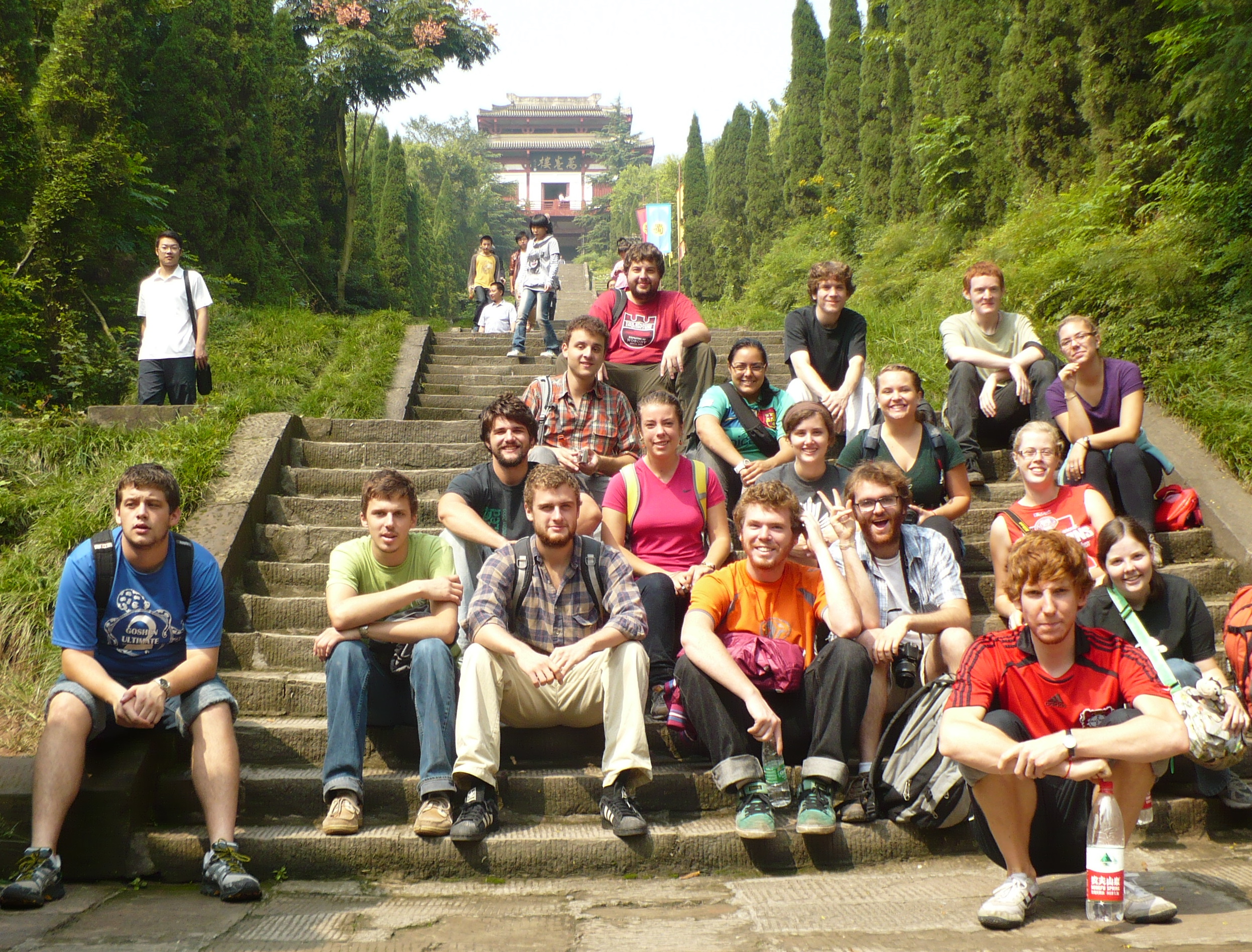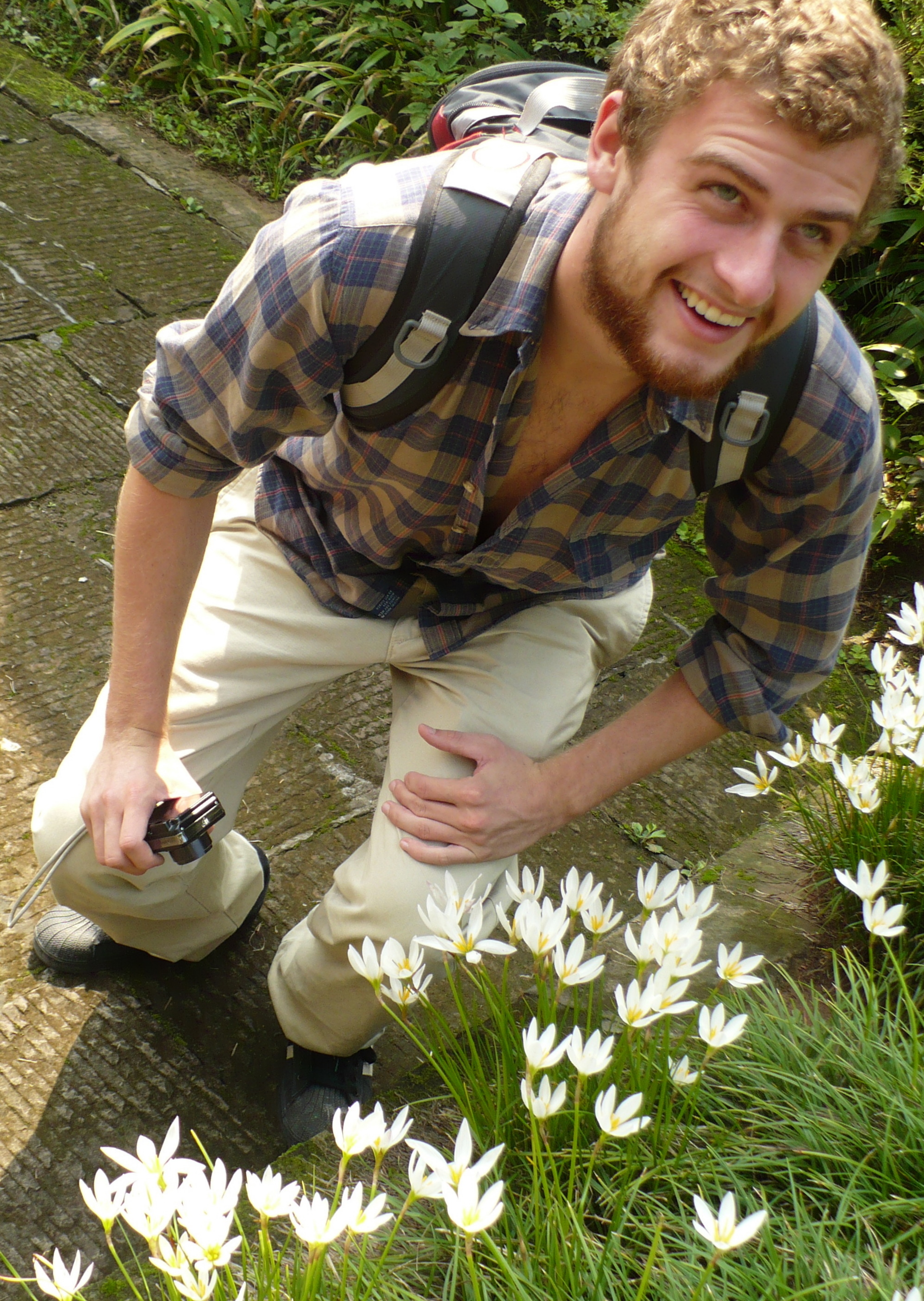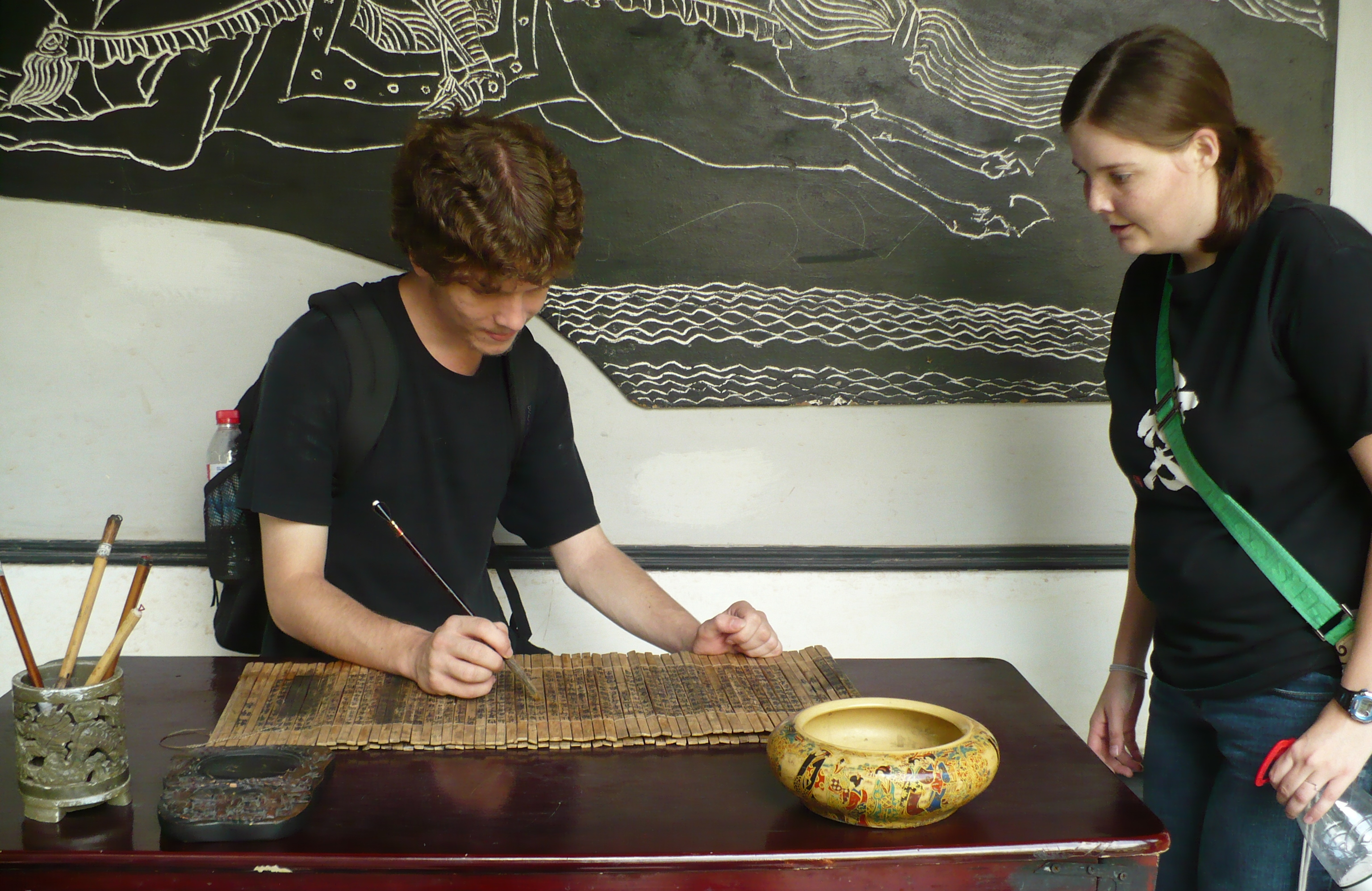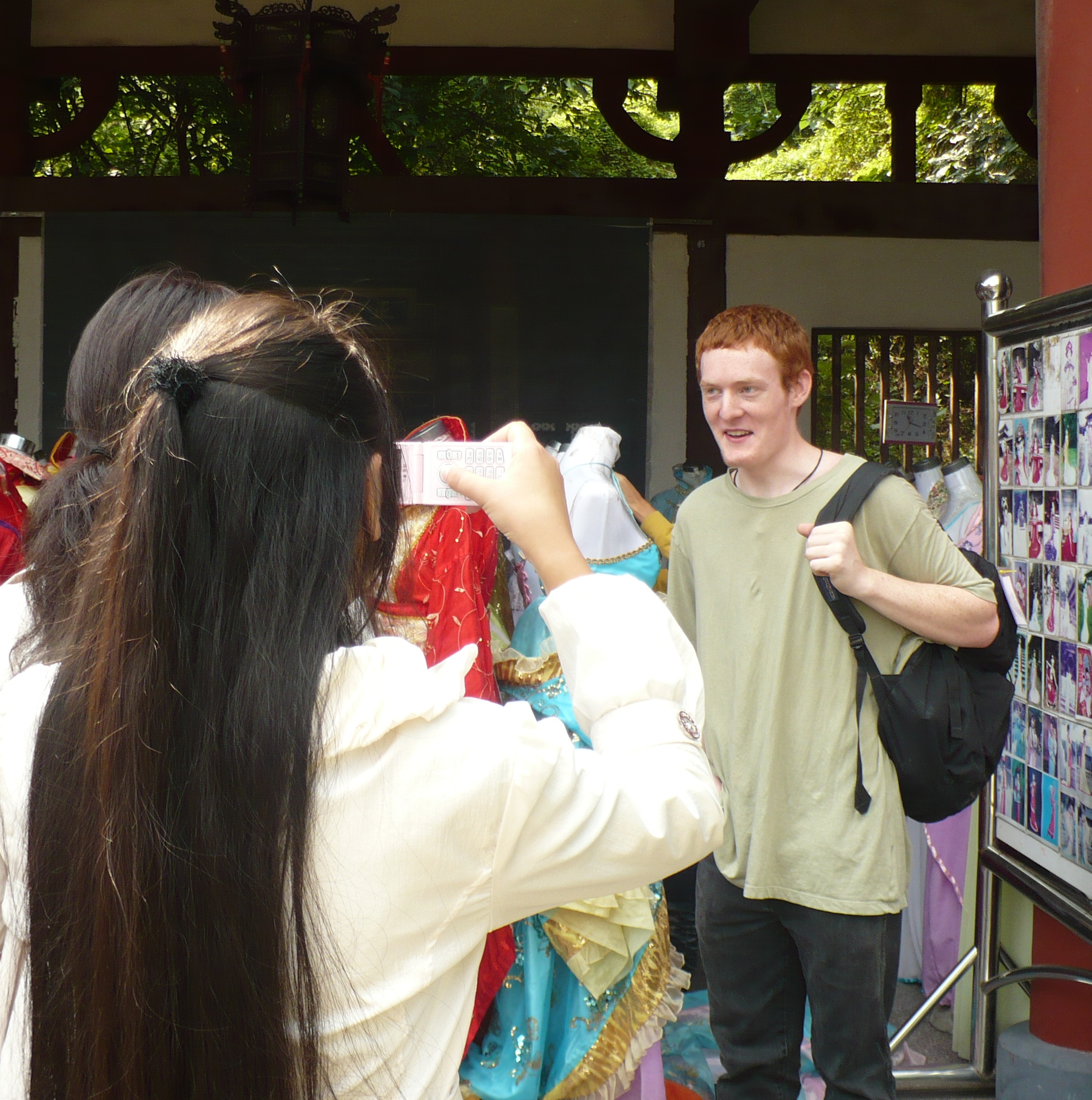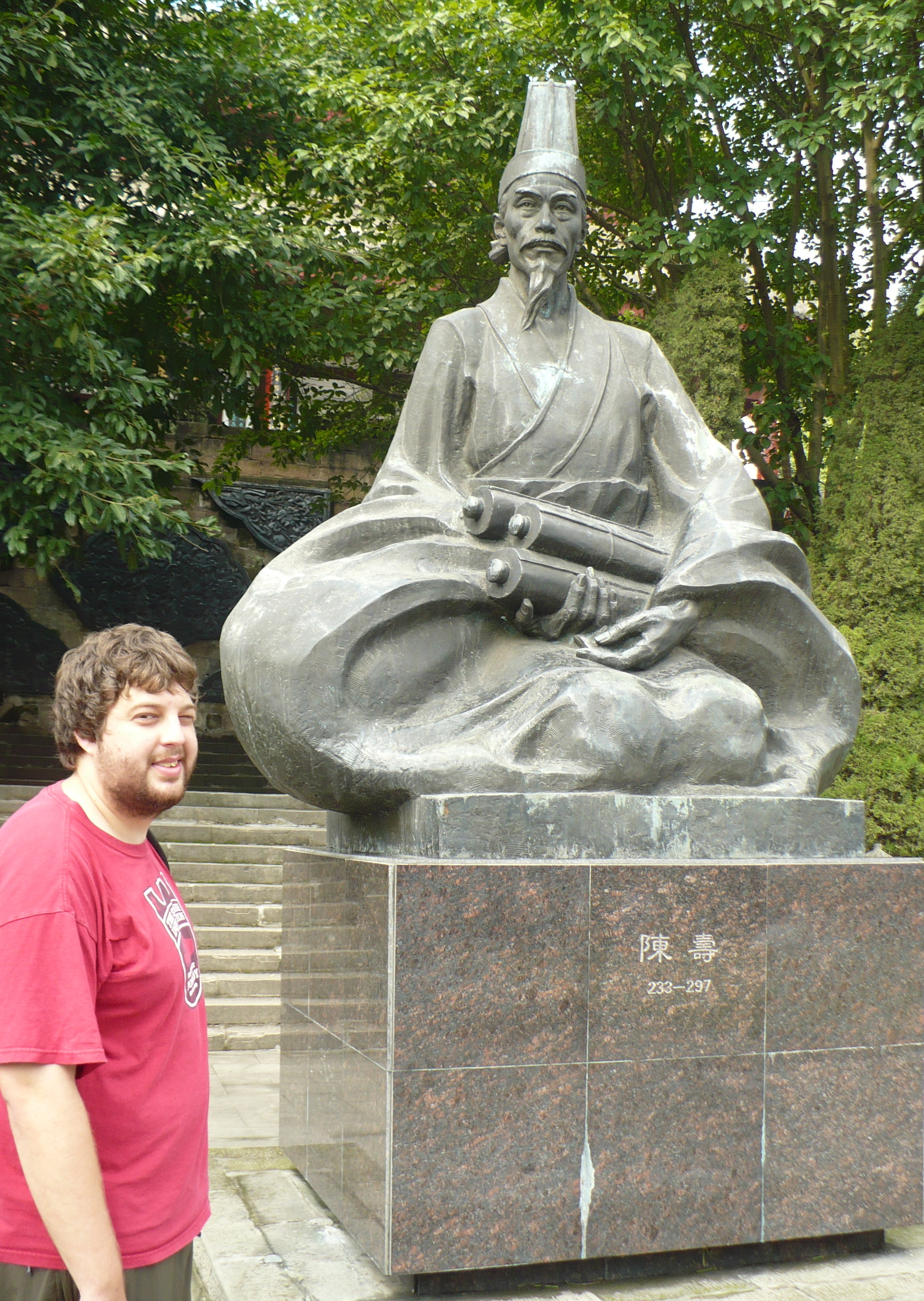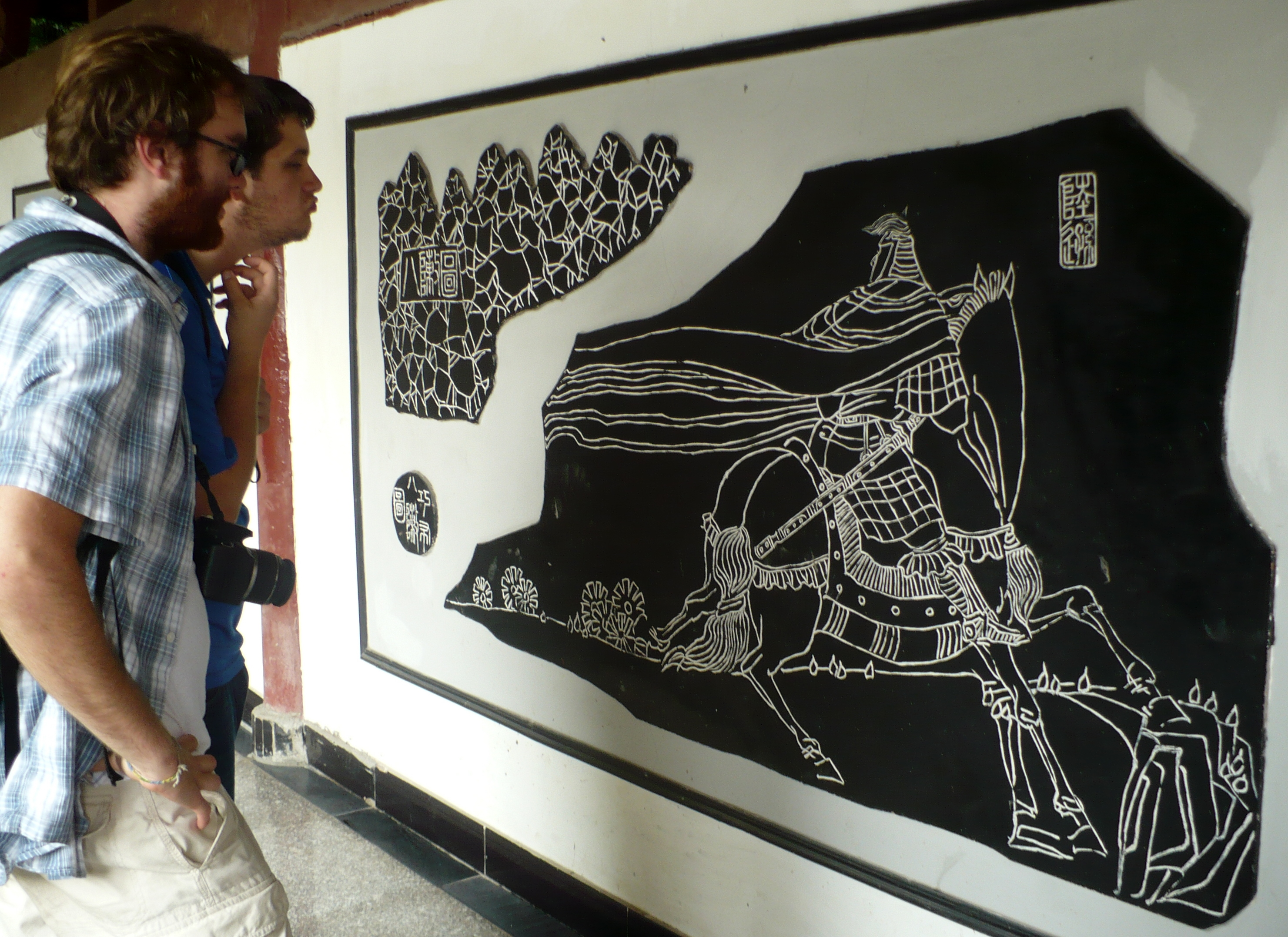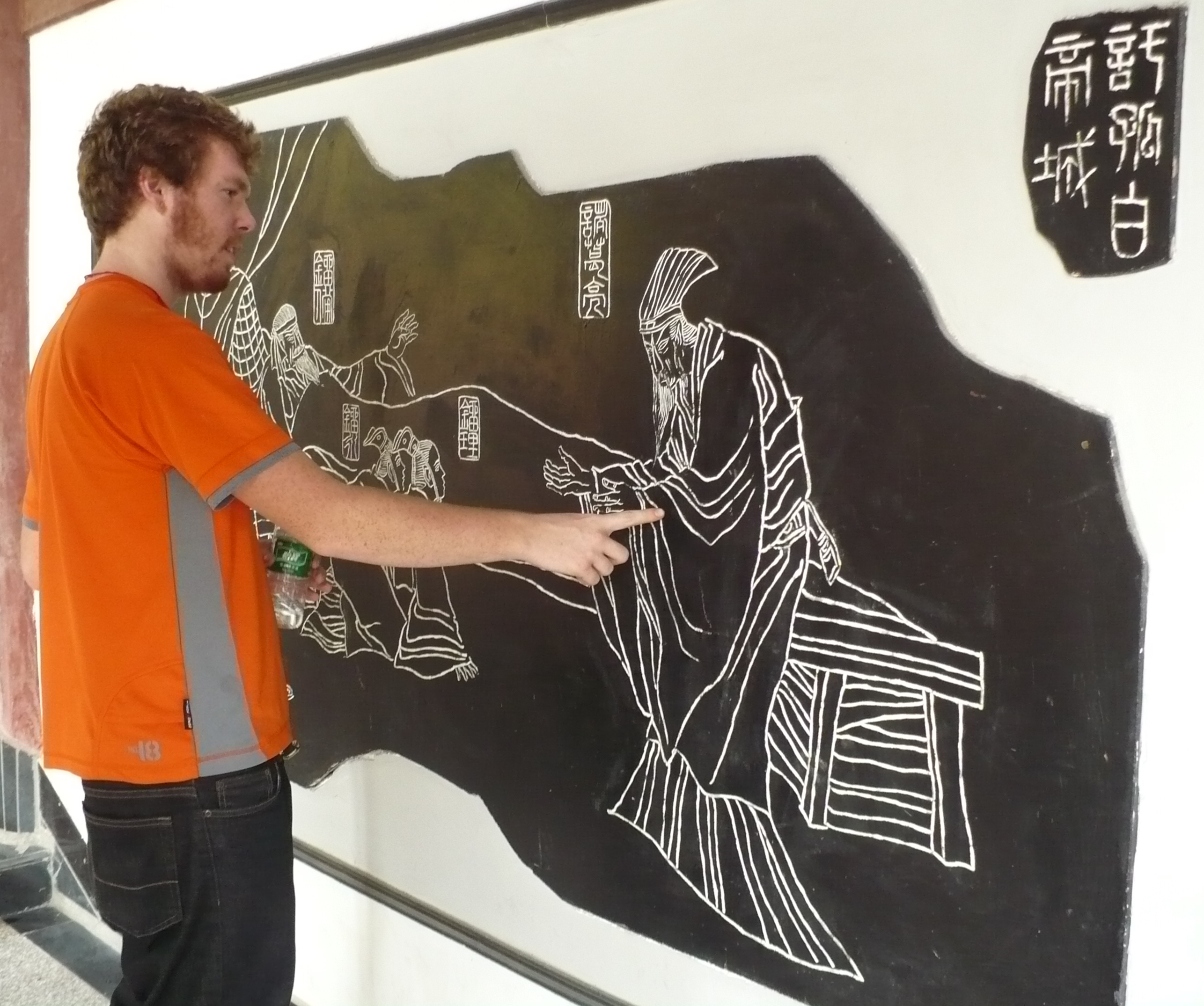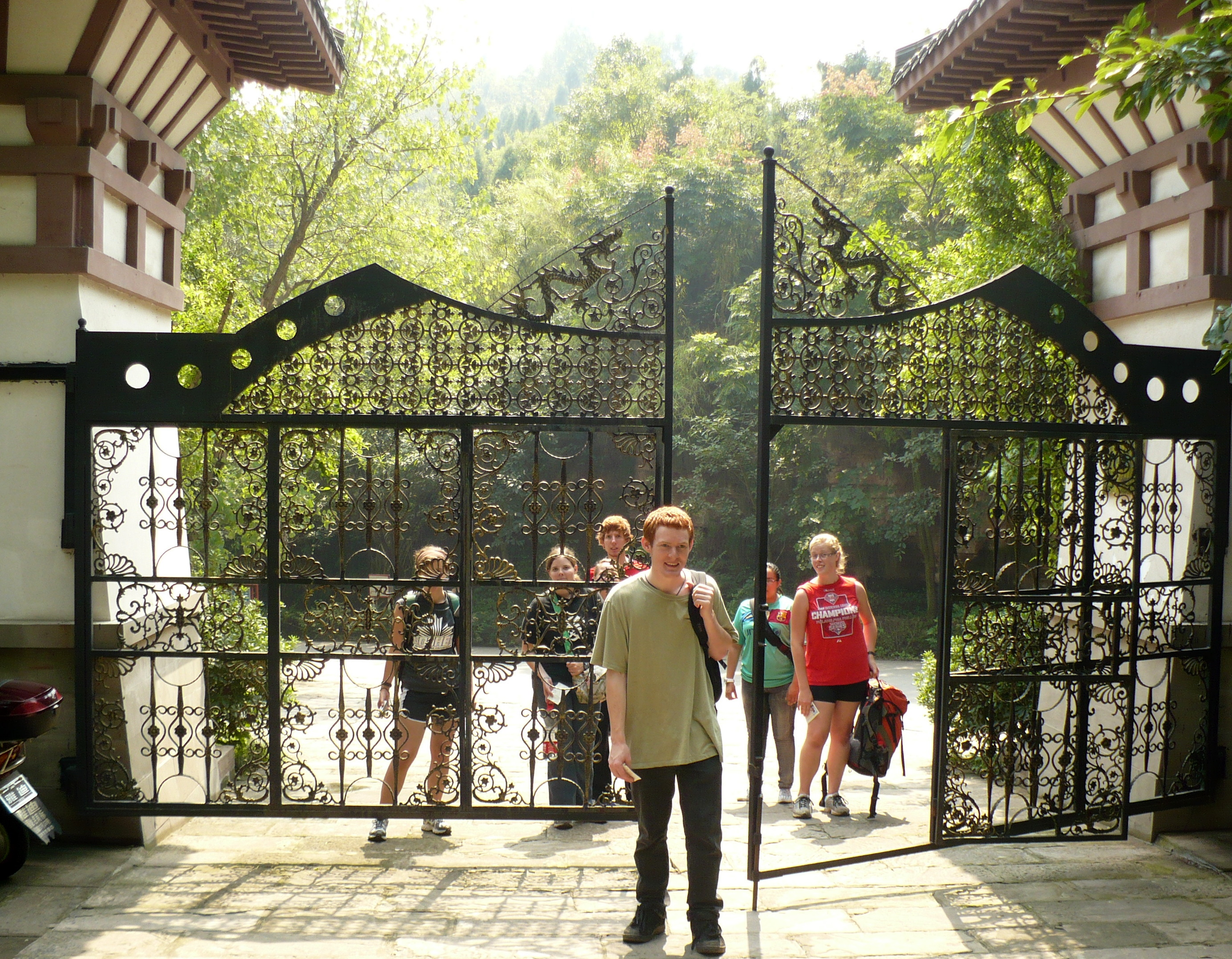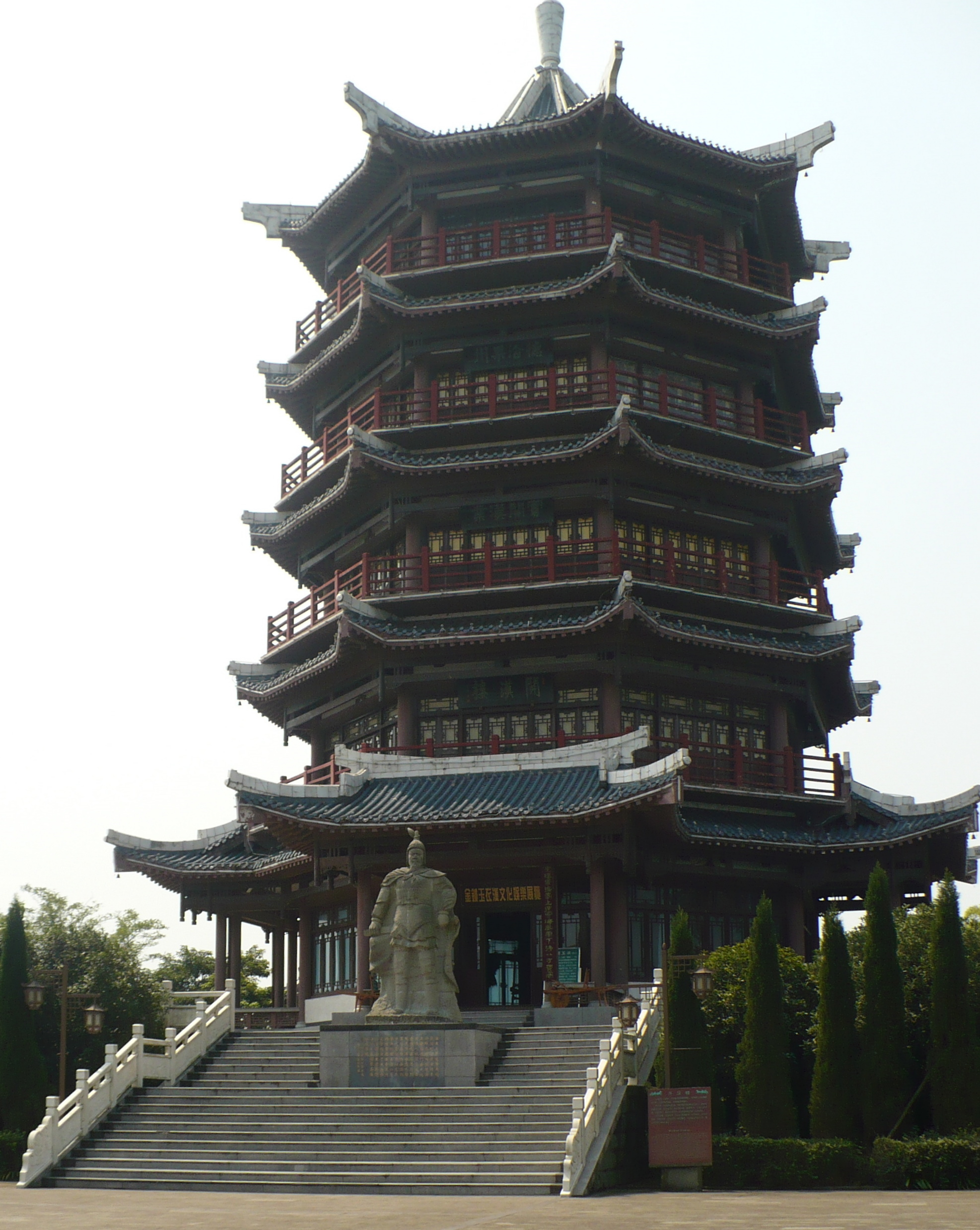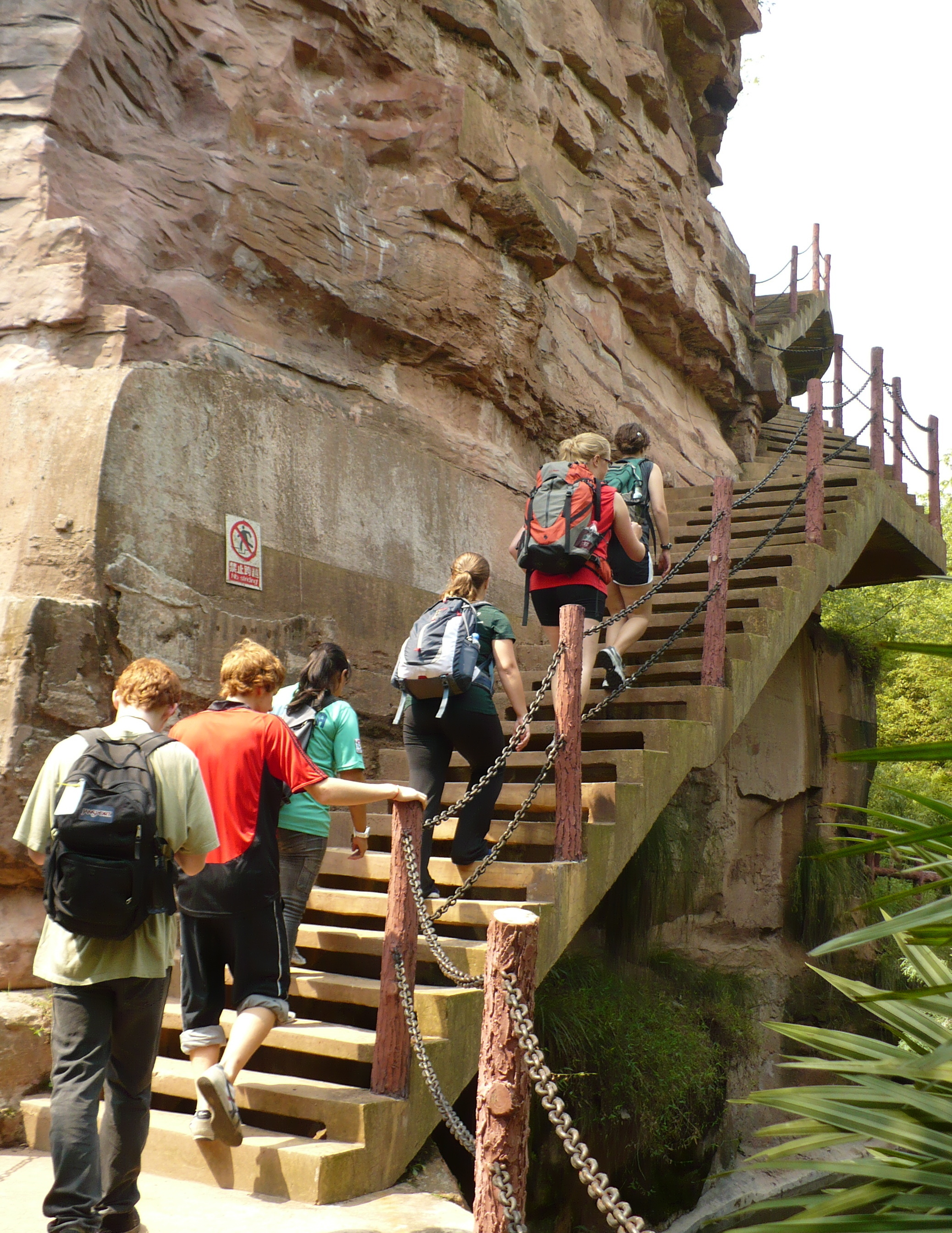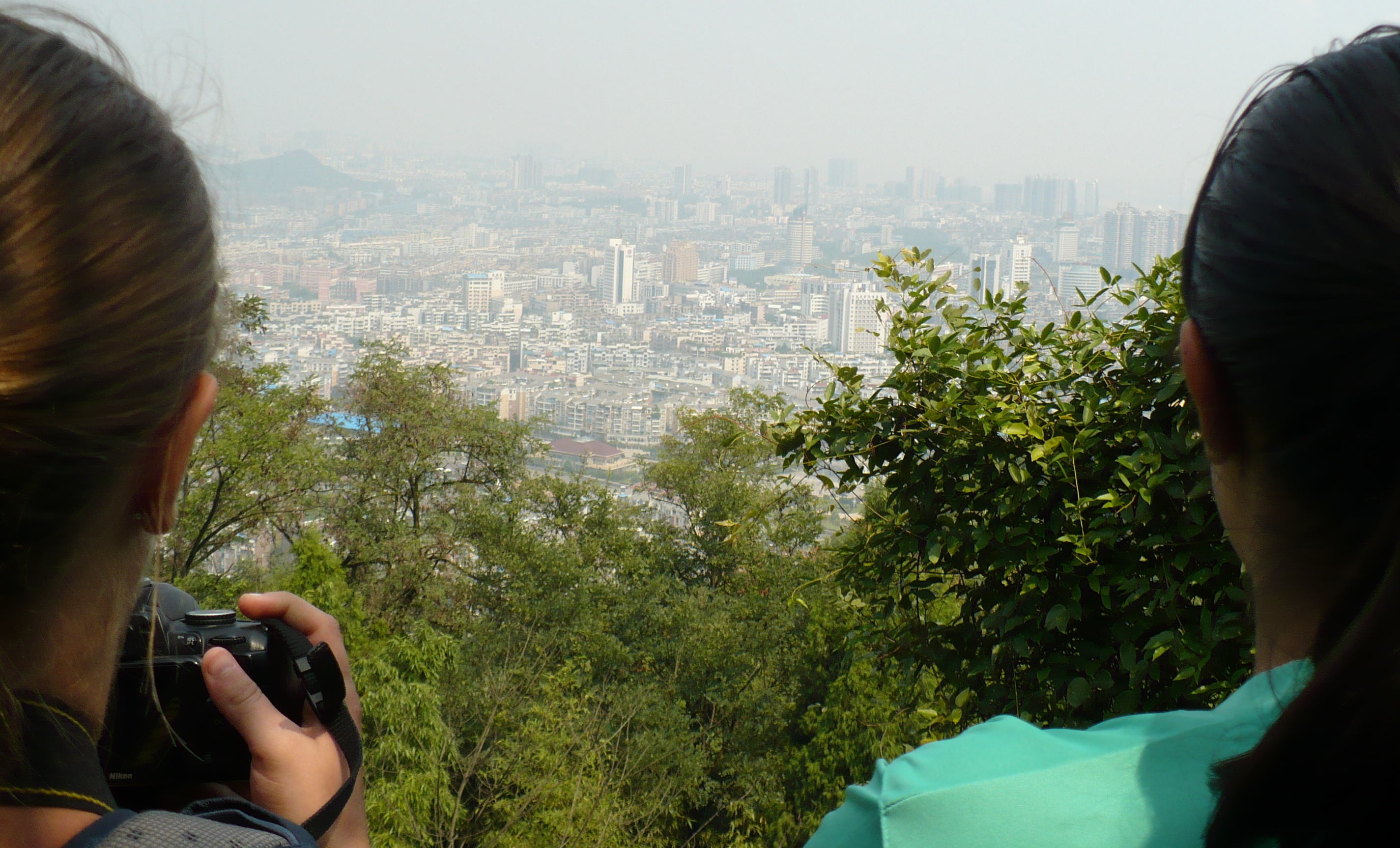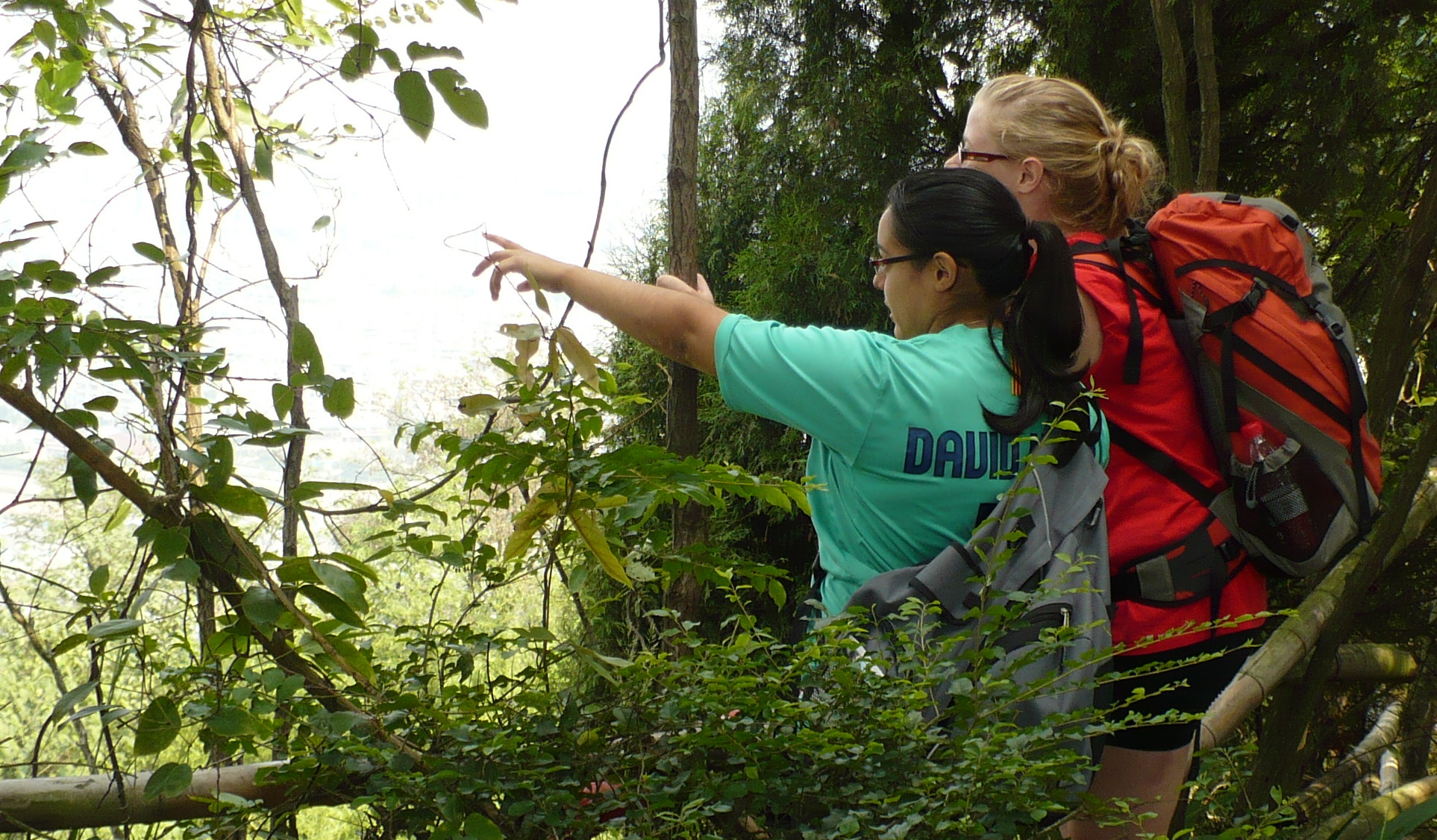Three Kingdoms
A cold snap had many of us shivering for most of this week. Language teachers helped us learn weather-related terms that distinguish among degrees of weather (rain shower, heavy rain, thunderstorm, etc.). The week’s lectures had us thinking about everything from education to geography to rural/urban issues in the New China. In our Friday afternoon group discussion we shared our observations about distinctions between private and public spheres in China and how these compare to distinctions we are used to back home.
On Saturday morning, most of us gathered to hike up a slope of the ridge that marks the city’s western edge. We were glad that the day was bright and warm, a nice respite from the cool temperatures earlier. Statues and structures along our path commemorate Nanchong connections to the Three-Kingdom era (184-280 C.E.). At the end of this turbulent period of Chinese history, Nanchong native son Chen Shou (“the filial and incorrupt”) made an historical account of the era. Since then, tales of the period have taken on a mythical character and form the basis for the classical novel The Romance of the Three Kingdoms which political and cultural leaders have continually turned for inspiration. The story continues to circulate in many forms in East Asian popular culture. At the top of the ridge was a museum and study center devoted to the Three Kingdoms. After visiting the museum, some of us headed back into town. Others continued north along the ridge to the Kaishan Tower, a replica of an ancient tower that once stood elsewhere in Nanchong.

